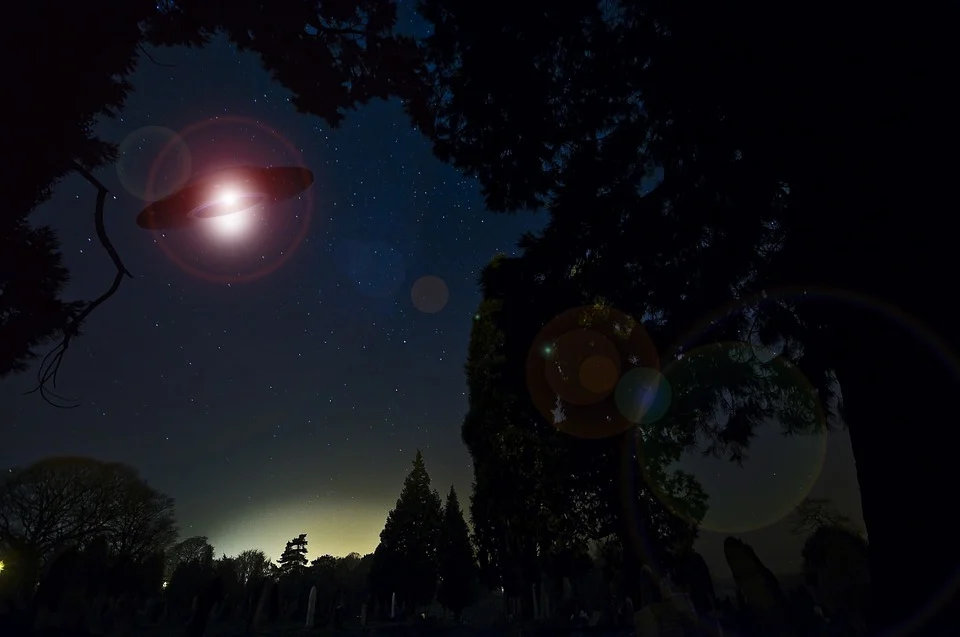Unidentified Aerial Phenomena, also known as UFOs, have recently attracted a lot of attention. Not only has the general population been drawn in, but scientists are becoming more and more fascinated as well. Naturally, reports of enigmatic objects in the sky are nothing new. Since antiquity, they have been happening. But historically, few scientists have given the issue any thought. Why is that so?
Time To Put The Giggles Away
One explanation for this is the ease with which more than 90% of observations may be accounted for. Even those that can are frequently dependent on eyewitness accounts, and it is widely known that human perceptions may be easily manipulated.
Add to this the comical nature of the subject. The stigma associated with such research might have major negative effects on a scientist’s career. Because of this negative outcome, observations without simple explanations frequently go unanswered.
However, things could be shifting. In response to its 2021 report on UAP, the Pentagon has established a new All-domain Anomaly Resolution Office with the mission “to coordinate efforts across the Department of Defense, and with other U.S. federal departments and agencies, to detect, identify, and attribute objects of interest in, on, or near military installations, operating areas, training areas, special use airspace, and other areas of interest, and, as necessary, to mitigate any associated threats.”
What are Anomalies?
Anomalies, unidentified space, airborne, underwater, and transmedium things fall under this category. NASA is also commenting this September, the agency’s own investigation into UAP is scheduled to begin.
The attempt by government organizations to understand what is going on with UFOs is not new. Project Blue Book, carried out in the 1950s and 1960s, is arguably the most well-known of these projects.
Methodical UAP strategies
But today’s thought-changing initiatives are not these official projects. The biggest adjustment is that we can now begin using the scientific method to study UAP.
According to the Pentagon assessment, the majority of UAP registered across numerous sensors, including radar, infrared, electro-optical, weapon seekers, and visual observation, “most of the UAP observed undoubtedly actually represent tangible objects.”
Eyewitness accounts can be easily discounted as optical illusions, but it is more difficult to explain away observations made using several techniques and covering a range of wavelengths.
Read more: Do Fermi Predators really exist?
How many observation stations were used?
Boris Zhilyaev and associates used two observation stations for their investigation, one in Kyiv and the other 120 kilometers away. With exposure periods adjusted to just one millisecond and frame rates no slower than 50 frames per second, color video cameras captured things moving across the daytime sky at rapid speeds.
The cameras did capture a number of hits. While some of the objects reflected light, others were so dark that they had zero albedo, or no albedo at all.
The only thing that all of the objects had in common was that they were traveling at speeds of up to 282 kilometers per second. When compared to the Earth’s escape velocity, which is 11.2 km/s, you can see how quickly you need to move in order to escape the planet’s gravity.
What Were The Research Observations?
In the Earth’s atmosphere, no actual item that was created by humans could come close to reaching such velocities. On the other hand, colorimetric techniques allowed the researchers to conclude that the objects were only a few miles above the planet’s surface.
The data intriguingly revealed a relationship between the brightness of the objects and their speed. We might then wonder if these objects are extraterrestrial spacecraft with an unidentified propulsion mechanism based on that information.
How was science helpful?
Again, science is at least somewhat helpful here. We might speculate on what the hallmarks of alien propulsion systems might be based on articles like one written in 2010 by Harold Puthoff from the Institute for Advanced Studies at Austin in Texas.
Nearby viewers may notice a blue-shift toward higher light frequencies, notice time passing more quickly, and feel the presence of anti-gravitational forces if a ship had a type of warp drive that could alter the space-time continuum.
With such supposition, we should undoubtedly use utmost caution. Could instrument problems be the only reason for the observations from Ukraine? Can we genuinely say that they represent moving actual objects? One UAP was seen by both telescopes, and the measurements appear to be accurate.
However, the authors have not fully answered these queries, therefore for the time being, the response is that we are unsure.
New frontiers to be crossed
Avi Loeb’s Galileo Project and Kevin Knuth’s and colleagues’ work at the University of Albany, who looked into a widely-publicized UAP seen by the Nimitz aircraft carrier group in 2004, are two other intriguing recent discoveries in this field.
Garry Nolan and his crew have made use of cutting-edge technologies to learn more about the byproducts of UAP observations, such as the well-known Council Bluffs sightings over a community in Iowa in 1977.
Now that it has been 75 years after the infamous UFO encounters at Roswell, New Mexico, where does that leave us? The vast majority of UAP observations are understandable both now and then. But a small portion cannot, and because of this, we have gathered throughout time.
Conclusion
The good news is that technology has developed so much that we do not need to stop there. The stigma attached to UAP research needs to be eradicated first. Allow science to do its thing.
What we’ll discover is unknown to me. At the very least, we might stumble upon some as yet undiscovered natural phenomena resembling sprites and elves. However, there is a much bigger reward in store: convincing proof that we are not the only species in the universe.
